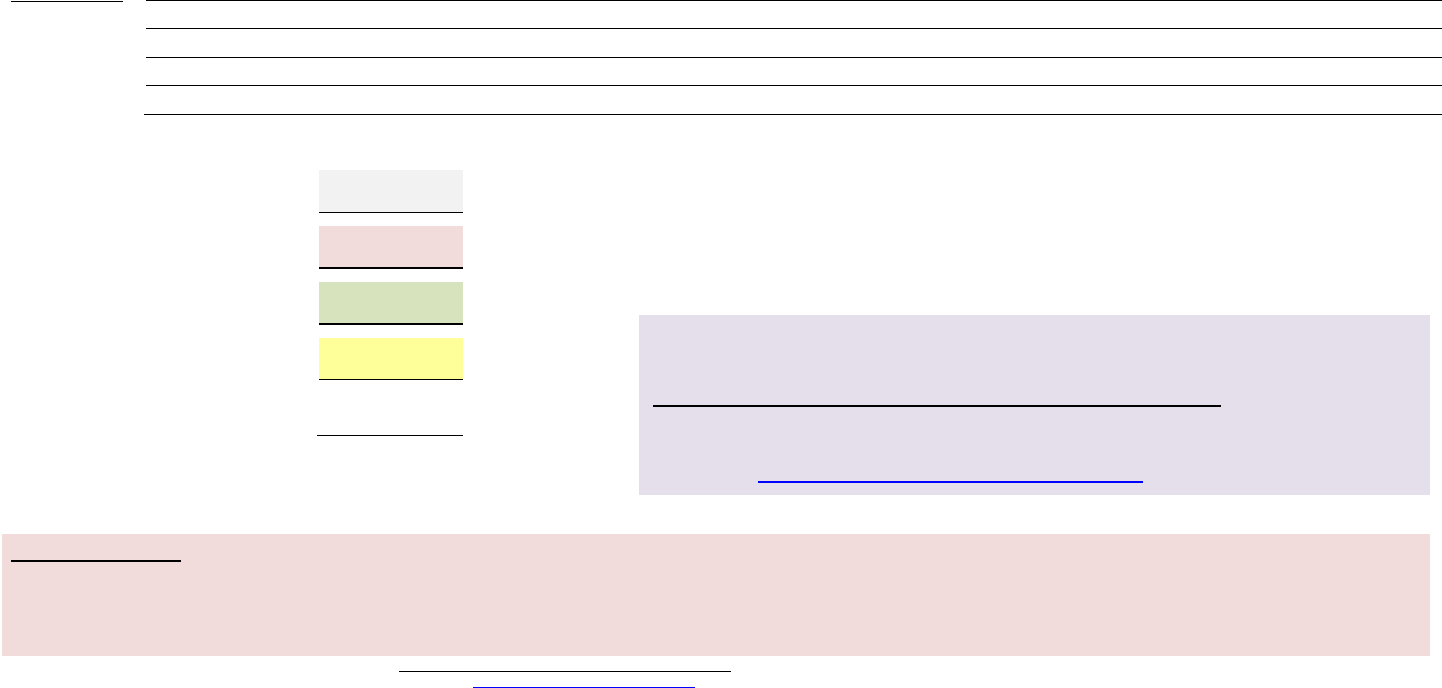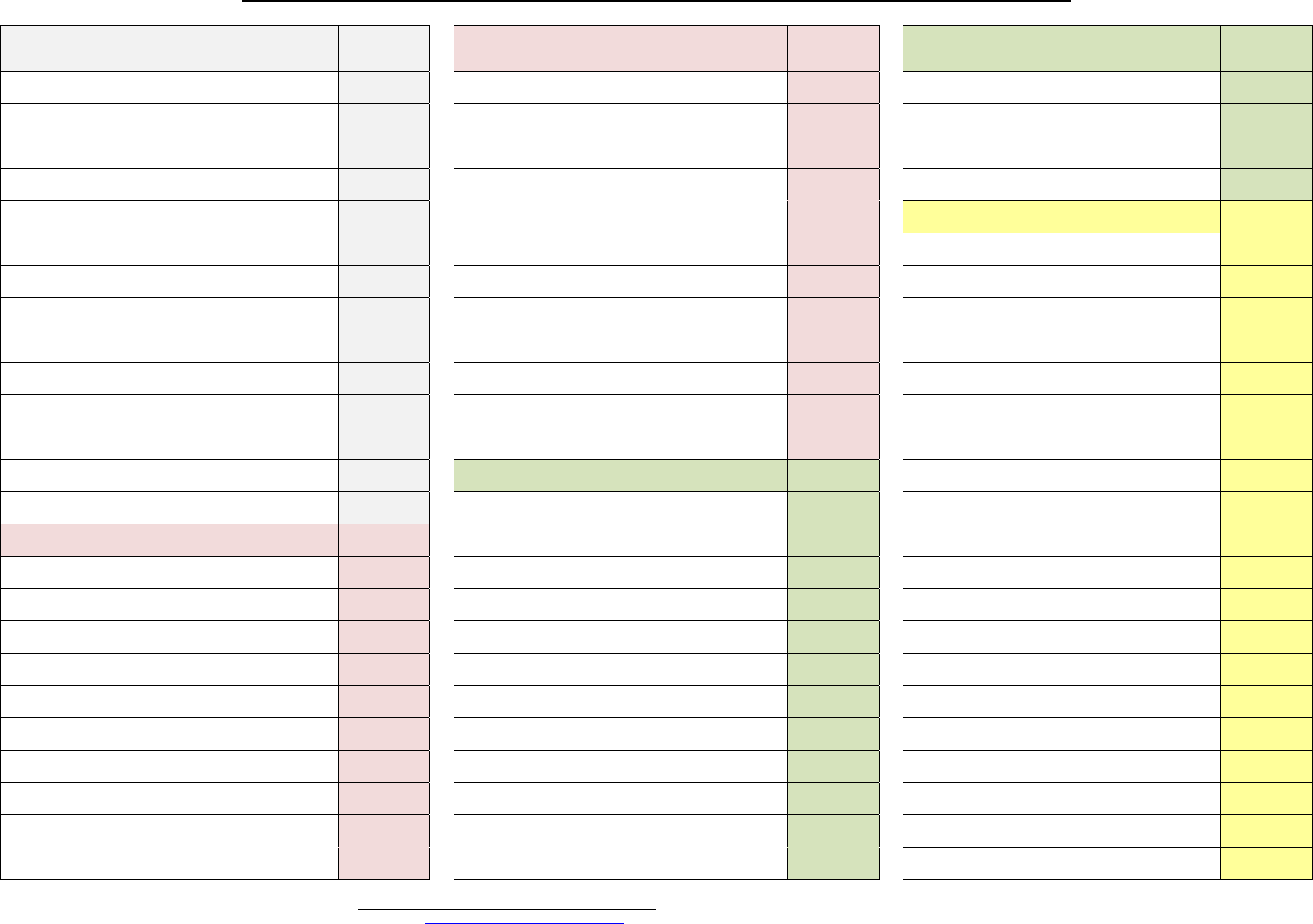
Copyright © Shannon Fuchs-Lacelle and Thomas Hadjistavropoulos The PACSLAC may not be reproduced without permission
For permission to reproduce the PACSLAC, please contact the copyright holders (Thomas.Hadjist[email protected])
Pain Assessment Checklist for Seniors with Limited Ability to Communicate (PACSLAC)
DATE: ________________ TIME ASSESSED: ____________ NAME OF PATIENT/RESIDENT: _______________________________
PURPOSE: This checklist is used to assess pain in patients/residents who have dementia and are unable to communicate verbally.
INSTRUCTIONS: Indicate with a checkmark, which of the items on the PACSLAC occurred during the period of interest.
Scoring the Sub-Scales is derived by counting the checkmarks in each column.
To generate a Total Pain Score sum all four Sub-Scale totals.
Comments:
Sub-scale Scores:
Facial Expressions
Activity/Body Movement
Social/Personality Mood
Other
Total Checklist Score
Note on Scoring
: There is no recommended cut off score at this time. Scores all depend on the person and context (e.g., whether they are
assessed over a shift or during a transfer). The authors recommend an individualized approach whereby a baseline series of scores is collected
for each resident and then the nurse observes deviations from the score (also examining whether pain treatments result in decline in scores).
Email correspondence from Thomas Hadjistavropoulos May 28, 2007
* “Other” sub-scale includes physiological changes, eating and sleeping
changes and vocal behaviours.
This version of the scale does not include the items “sitting and rocking”,
“quiet/withdrawn”, and “vacant blank stare” as these were not found to be useful
in discriminating pain from non-pain states.
Copyright © Shannon Fuchs-Lacelle and Thomas Hadjistavropoulos
The PACSLAC may not be reproduced without permission
For permission to reproduce the PACSLAC, please contact the copyright
holders ([email protected]
)

Copyright © Shannon Fuchs-Lacelle and Thomas Hadjistavropoulos The PACSLAC may not be reproduced without permission
For permission to reproduce the PACSLAC, please contact the copyright holders (Thomas.Hadjist[email protected])
Pain Assessment Checklist for Seniors with Limited Ability to Communicate (PACSLAC)
Facial Expressions Present
Activity/Body Movement
Present
Social/Personality/Mood Present
Grimacing
Decreased activity
Upset
Sad Look
Refusing medications
Agitated
Tighter face
Moving slow
Cranky/Irritable
Dirty look
Impulsive Behaviour (e.g.,
Frustrated
Change in eyes (squinting, dull,
bright, increased movement)
repetitive movements)
Other*
Uncooperative/Resistant to care
Pale Face
Frowning
Guarding sore area
Flushed, red face
Pain expression
Touching/holding sore area
Teary eyed
Grim face
Limping
Sweating
Clenching teeth
Clenched fist
Shaking/Trembling
Wincing
Going into foetal position
Cold & clammy
Opening mouth
Stiff/Rigid
Changes in sleep (please circle):
Creasing forehead
Social/Personality/Mood
Decreased sleep or
Screwing up nose
Physical aggression (e.g., pushing
Increased sleep during day
Activity/Body Movement
people and/or objects, scratching
Changes in Appetite (please
Fidgeting
others, hitting others, striking,
Decreased appetite or
Pulling Away
kicking)
Increased appetite
Flinching
Verbal aggression
Screaming/Yelling
Restless
Not wanting to be touched
Calling out (i.e. for help)
Pacing
Not allowing people near
Crying
Wandering
Angry/Mad
A specific sound or vocalisation
Trying to leave
Throwing things
For pain ‘ow’, ouch’
Refusing to move
Increased confusion
Moaning and groaning
Thrashing
Anxious
Mumbling
Grunting

Copyright © Shannon Fuchs-Lacelle and Thomas Hadjistavropoulos The PACSLAC may not be reproduced without permission
For permission to reproduce the PACSLAC, please contact the copyright holders (Thomas.Hadjist[email protected])
